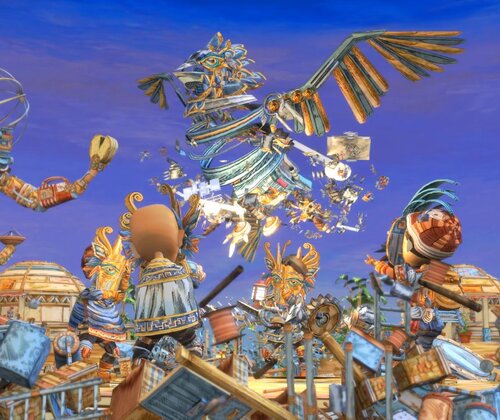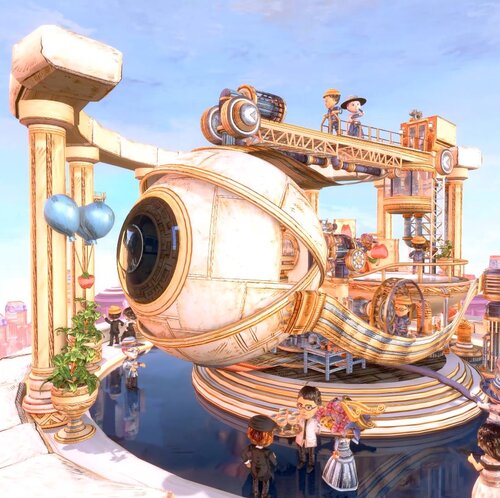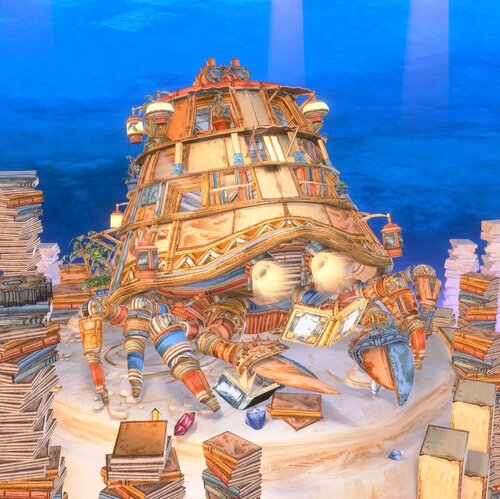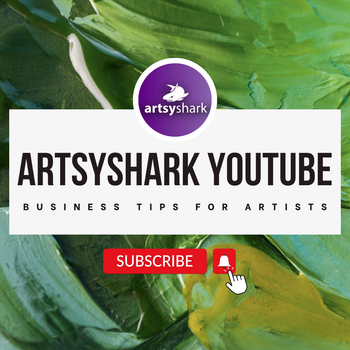by Carolyn Edlund
A huge emerging market has opened for artists to sell digital work online. Here’s how it works.

“Rebirth of the Yesterbeasts” by Marc-O-Matic, sold for 3.75eth ($3,105) on Makers Place (click image to view animated NFT)
Crypto Art is a new market for digital artworks traded securely with blockchain technology. It’s often sold through online platforms using cryptocurrency such as Bitcoin or Ethereum. Artworks are paired in the crypto space with “non-fungible tokens” (NFTs) which authenticate each work as scarce and unique.
Blockchain technology is a decentralized, trustless system that provides transparent, verifiable documentation for the artist as creator and for collectors as the owners of the art, and shows provenance over time as a permanent record. It is even being used to authenticate and track physical artwork as a way to reduce fraud and increase consumer confidence. But the application of this technology actually has a vast number of uses, including financial services, security and privacy, legal applications and more.
Where does the Crypto Art market exist? New online marketplaces such as SuperRare, Rarible, Open Sea and others have cropped up that allow digital artists to display and sell through auction or outright sale. NFTs are not always art; they can take the form of music, collectibles, and even digital real estate. This hot market has recently produced astonishing headlines and gained lots of interest from collectors, investors and others.

“The Original Oculus” by Marc-O-Matic, sold for 4.4 eth ($7,103) on SuperRare (click image to view animated NFT)
Marc-O-Matic is an artist based in Melbourne, Australia who entered the Crypto Art market during the last year and found it to be tremendously profitable. Marc describes his art as a compilation of illustration, Virtual Reality (VR) and Augmented Reality (AR), designed to provide an immersive technology experience.
“Augmented Reality allows you to create an intersection between art and digital,” he says. “I fuse traditional skills with AR to present art in different engaging ways by repurposing illustrative work and augmenting it to become an experiential and engaging way to view art.”
In the immersive environment (which may be a gallery or other space) artwork is viewed through mobile phones or tablets to access the AR housed in an app he developed. The physical work acts as a QR code that triggers the animation. In the video below, Marc-O-Matic explains his work, while using AR to produce animation that mimics his facial gestures.
His work is sold on several online platforms including SuperRare, a platform on the Ethereum blockchain which has a curatorial selection process (and a high volume of artists applying). Artists submit images and a video of their work for approval. Each sale made on SuperRare involves a 15% commission plus a charge to pay the “gas” fee charged when spending Ethereum. The artist will be paid again if and when a secondary sale is made, with 10% of the price going directly to them automatically through the blockchain—with no middle man involved.
That is part of the the appeal of the blockchain, which eliminates the “smoke and mirrors” that can sometimes happen with brick and mortar gallery sales where artists don’t know who has purchased their work. The technology is transparent on ownership, allowing artists to benefit from royalties on their own work.
When art as an NFT can be freely shared online, how does that affect the rights of creator and owner? Marc-O-Matic explains, “If you make a sale, the collector cannot redistribute or reproduce the work in any way, including physical copies. The artist cannot either. It’s a 1 of 1 edition. Doing so would defeat the purpose anyway, since the reasoning behind NFTs is artificial scarcity. The artist could, however, share 3D animations through social media and online, so long as they do not sell it again. And, as digital artwork that has been sold gets proliferated online and becomes popular, it actually adds value to the work. The more people who see it, the higher the perceived value.”
Why do people collect NFTs? “Everyone has their own drive when collecting,” says the artist. “Some like to buy art at a lower price, and flip it later, so that it pays off as an investment. Others are genuine collectors who see the value of digital assets. They understand that as we dive deeper into a digital world with immersive tech, having NFTs in place offers them importance as owners.”
Commissions are also a huge part of this space, as awareness of the investment value of digital collectibles increases. Companies are having NFTs made specifically for them that support their brand. The NBA recently dropped a series of collectible packs of player trading cards that has exploded in popularity. This opportunity to monetize is crossing industries and will increase in the foreseeable future.
NFTs may have other functions included within them, above and beyond just the art. There are multiple uses, such as unlocking another world inside of a piece of art. Marc-O-Matic poses a potential use, saying “An emerging musician can create tracks with interactive visuals. Imagine purchasing a track of music as an NFT that includes an embedded interview with the artist or something else special. That may be originally purchased for $50.00 but could be worth thousands of dollars when they are famous.”

The Inquisitive Hermit Crab, sold for 14eth ($5,151) on SuperRare (click image to view animated NFT)
If an artist wanted to get involved in the Crypto Art market, how would they begin? He lays out several steps. “First, do your research in order to understand this new world, how it works, and what the value is. I recommend an article titled The NFT Bible published by Open Sea. It offers a breakdown of the history of tokens, the reasoning behind them, and what makes them so unique and special.”
The next step is to get set up. “You will need a crypto wallet, which is where you store your currencies, and how you conduct transactions,” he says. “It also is a key to unlock your account on certain platforms. So if I was going to sell a work on SuperRare, I need a wallet to unlock my account. Each wallet has a unique address, and I would use that address to distribute art on that platform. Metamask is one of the more popular wallets to use.”
Artists who want to sell would also need to acquire cryptocurrency in the form of Ethereum. This allows you to pay gas fees to process and validate transactions, and also to receive payment in the currency, to be held in your cryptocurrency wallet.
In order to find a platform to list your NFTs, you will need to evaluate those options. Some are curated, requiring a submission process and subsequent approval. Others (such as Rarible and Open Sea) do not. Then, upload your art and start trading!
Marc-O-Matic notes that digital art isn’t the only thing you can sell on the blockchain; you can sell physical art as well. “I’ve recently created physical painted prints,” he says. “Each artwork has a wax seal signature, embedded with NFT chips behind that seal that contain information about the art, its origin and more. When scanned, it leads to a website that shows records of the transactions of the physical art and its history of ownership. You can essentially embed NFT chips in your own artwork too authenticate ownership and value.”




I’m not readily finding information online about the chips mentioned that were embedded in a physical piece of artwork.
Where do you obtain NFT chips to embed in physical artwork?
https://blockchainartcollective.com/starterkit
fyi.. it’s the blockchain that is secure not the “chip”. You could also print out the QR code from a registered certificate and glue it on the back of a physical art piece. There is no reason a company needs to “embed” a chip or mail something to you.